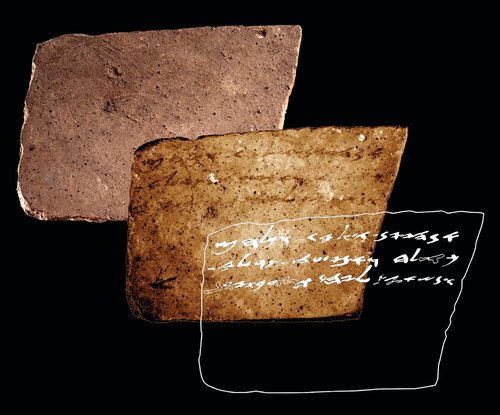An innovative new imaging process is allowing Israeli archeologists to uncover never-before-seen inscriptions on some very rare artifacts. The new writings have been found on shards of pottery dating back to the First Temple-era, and the discoveries offer some fascinating insights into the culture and day-to-day life of people who lived 2,600 years ago.
Is End Times Prophecy Unfolding Before Our Eyes in Syria?
The new text was discovered on a shard of pottery dating back to 600 BC, before Judah’s Kingdom was destroyed by Babylonian King Nebuchadnezzar, by researchers at Tel Aviv University’s department of applied mathematics. The artifact has been on display for over 50 years at the Israel Museum in Jerusalem, but archeologists have not had the resources to truly inspect every facet of the piece until now.
As the Jewish News Service reports, researchers are now using a high-tech multispectral imaging process with additional filters specifically meant to scan pottery shards, or pieces of stone with inscriptions called “ostraca.” An algorithm is then employed to produce an optimal image that, in this particular case, was able to decipher 50 characters that were previously undetectable on the rear side of the shard.
Arie Shaus, one of the lead researchers on the project, told JNS that the front side of the shard had been thoroughly studied for some 50 years, and its text contains “some kind of standard letter opening, with one person blessing another using the name of God, ‘Y-H-W-H.’” This alone is “interesting and important” because it shows that, unlike modern Jews, those living in ancient Israel were able “freely” write the full spelling of God’s name.
The newly discovered message on the back of the shard is a continuation of what was written on the front but reveals a more personal relationship between the sender and receiver. According to Shaus, the message was addressed to a man called El-Yashiv, who was a quartermaster of the Arad fort, and the text contains a request for wine and an offer to assist the receiver with whatever he may need. Shaus describes it as “quite a friendly correspondence.”
“He had some sort of large storage facility and people brought him wine, olive oil and flour, and he was corresponding with neighboring forts and armies around the fort,” he explained. “Sometimes with these texts, the opening will show that the person is subordinate or superior, but this one is quite friendly. So it seems like they are colleagues, or the same rank.”
While the discovery of the hidden characters has caused great excitement in the archeological community, there is a question of what has been missed or lost over the years as a result of this technology not being available.
“We scanned the back and we were astounded with what we discovered. It looked terrific using this technique, and it had not been visible to anyone for 2,600 years,” Shaus said. “It is incredible, and we were extremely excited to have discovered this kind of material, but it’s also a bit tragic because now we think about all of the inscriptions that we may have lost.”
Ultimately, Shaus believes the imaging technique has a low enough barrier to entry that it could be used in any and all excavation projects to ensure that researchers are able to uncover as much as possible from artifacts.
“Maybe they should just image everything,” he said. “Using low-cost equipment like the camera used in this discovery would allow each excavation to buy or construct one… or at least create a filtering system whereby only samples of pottery, which could have been used for writing, are saved and scanned. Maybe we have lost more inscriptions than we have found, but didn’t figure it out until now. It’s tragic, but we are also optimistic, because now we have the technology to do this.”
H/T: JNS.org
—


